31 May Terrazzo Costs: Tips for Achieving Affordability
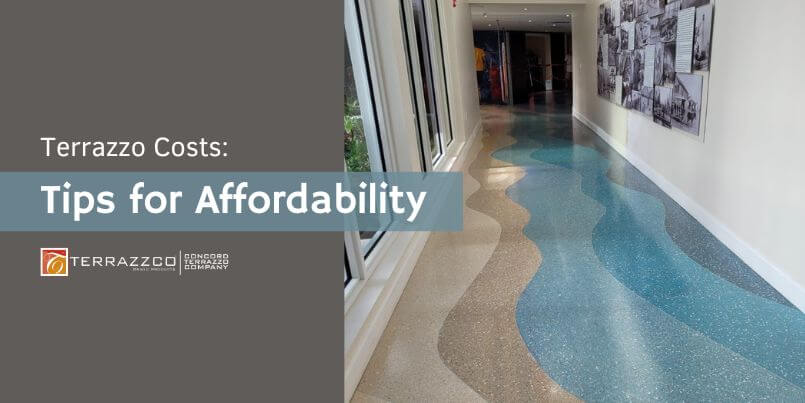
When it comes to flooring and surface options, terrazzo has gained immense popularity due to its durability, versatility, and unique aesthetic appeal. Terrazzo is a composite material made from chips of marble, glass, and other decorative stones embedded in an epoxy or cement binder, creating a stunning, seamless surface. However, one aspect that often concerns property owners and designers is the pricing of terrazzo installation. In this blog post, we will provide tips on material and product options that can make terrazzo more affordable.
Initial Costs
Poured terrazzo floors have higher installation costs than most flooring options available. A terrazzo installation requires specialized skills, craftsmanship, and equipment. The process involves hand-troweling the terrazzo over a substrate, then grinded and polished into a smooth flat surface. The labor-intensive nature of the process contributes to the higher cost.
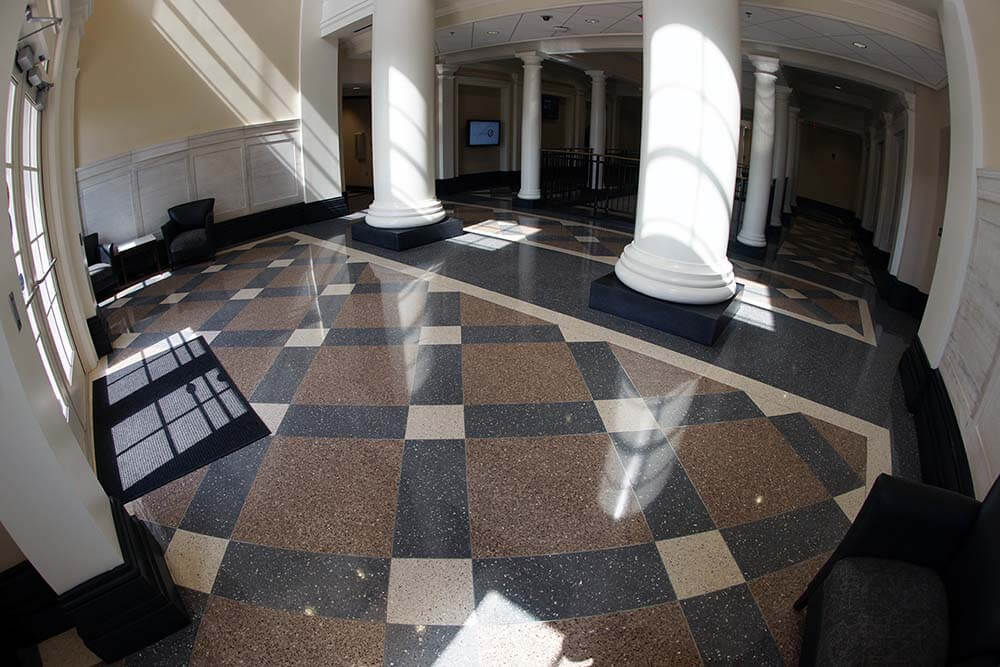
Lifecycle Costs
While the initial costs of terrazzo may be relatively high, it boasts the lowest lifecycle costs compared to other flooring systems. Terrazzo’s outstanding durability positions it as a long-term flooring solution for buildings with multi-decade lifespans. In fact, terrazzo floors have the potential to endure throughout the entire lifespan of a building. Furthermore, terrazzo’s low maintenance requirements save building owners valuable time and money, as annual floor care becomes more convenient. These factors contribute to terrazzo being a sound investment for a variety of buildings today, including office headquarters, universities, hospitals, and sports stadiums.
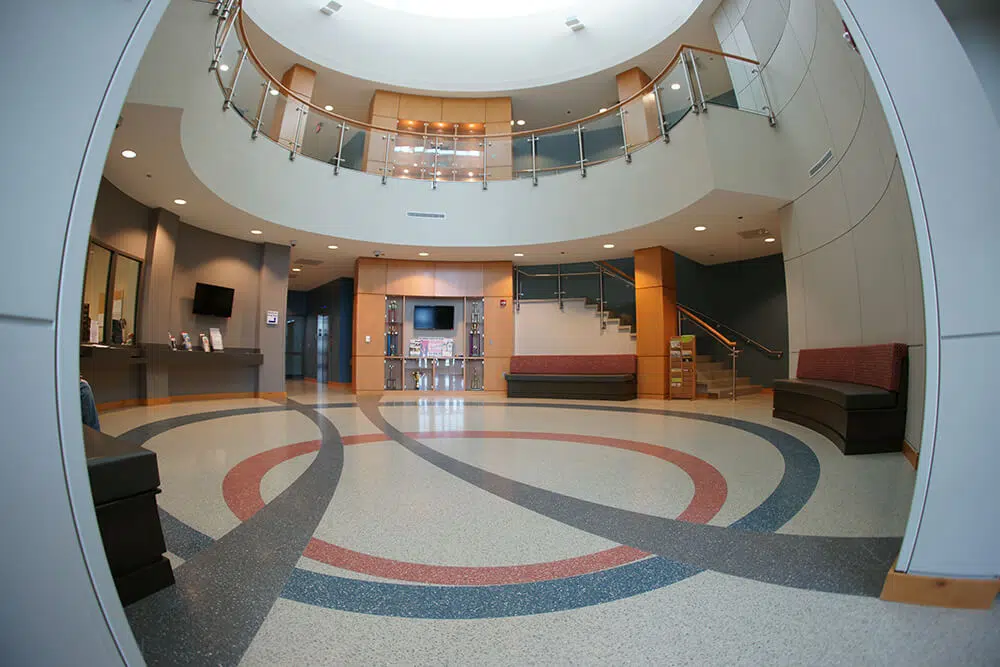
Tips for Saving Costs on Terrazzo Materials
An epoxy terrazzo floor primarily consists of three main components: epoxy resin, aggregates, and divider strips. The combination of these components creates a seamless and long-lasting flooring option that is both aesthetically pleasing and highly durable.
Epoxy Resin
The epoxy resin acts as the binder that holds the aggregate materials together. What makes epoxy resin particularly versatile is its ability to be tinted to any desired color. Manufacturers typically offer a two-part system for epoxy terrazzo, comprising a Part A epoxy resin and a Part B hardener (curing agent).
- Self-Priming Resin: Using a self-priming epoxy resin can be a cost-saving option for contractors. Certain manufacturers provide an epoxy-based primer along with the epoxy resin. TERRAZZCO EZPour Epoxy 158, for instance, is a self-priming product that eliminates the requirement of purchasing an additional primer for terrazzo installations. This not only saves contractors valuable time but also reduces costs associated with additional materials. By opting for a self-priming epoxy resin, contractors can streamline the installation process and enhance overall project efficiency.
Aggregates
The choice of materials and size of the aggregates can impact costs.
- Aggregate Type: The color and quality of the aggregates are highly variable and can significantly impact the pricing of a finish terrazzo floor. Marble chips offer a unique selection of colors that are budget-friendly for terrazzo projects. However, clients should be aware that aggregates such as colorful glass chips and Mother of Pearl shells may come at a premium price.
- Aggregate Size: Did you know that the size of terrazzo chips can impact the overall cost? Here’s a helpful tip when it comes to epoxy terrazzo floors with a thickness of 3/8″: choosing standard sizes ranging from #0 to #2 is your best bet for cost efficiency. For those aiming for Venetian designs with larger aggregate types, it’s important to note that they tend to be more expensive. While these designs create a stunning visual impact, it’s essential to consider the budget implications when making your selection
Contractors and clients should carefully consider the selection of aggregates to balance their desired visual appeal with the associated costs when planning a terrazzo floor project.
Divider Strips
Divider strips are available in various materials, including brass, aluminum, stainless steel, and plastic. They serve as both functional and aesthetic elements of a terrazzo floor.
- Divider Strip Costs: To keep costs affordable, terrazzo contractors often suggest the use of aluminum divider strips. Installing zinc and brass divider strips can be more expensive. When using brass divider strips with a white or light epoxy color, caution is advised to prevent a potential blue effect. This effect can occur when copper in the brass is exposed to oxygen in the presence of water or hardener. Proper installation by a qualified terrazzo installer is crucial for brass divider strips. As a result, aluminum divider strips are widely accepted as a more practical and cost-effective choice.
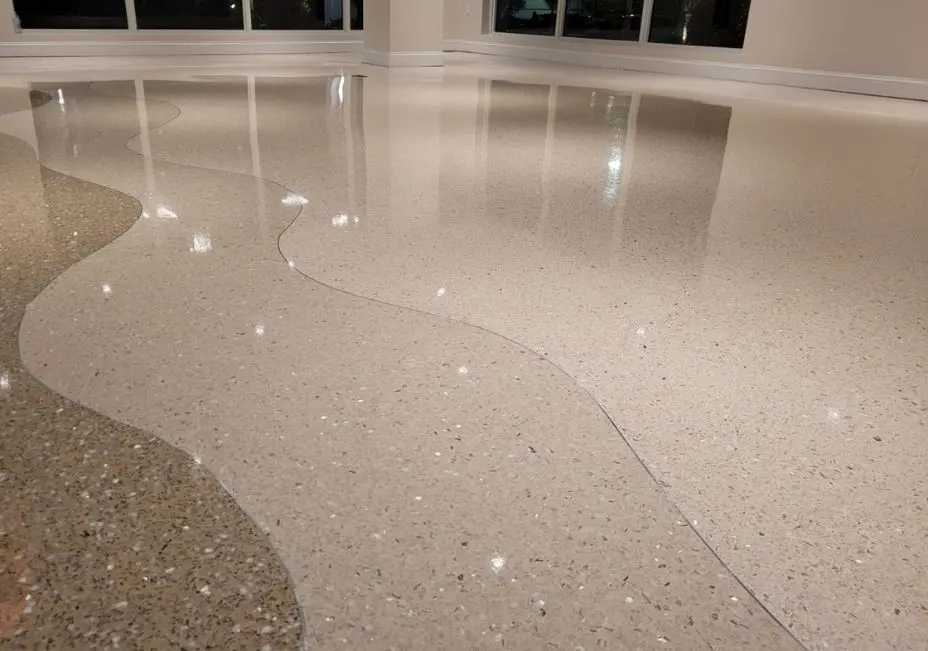
Tips for Precast Terrazzo Costs
Precast terrazzo combines the elegance of terrazzo with the advantages of precast construction techniques, resulting in a remarkable and functional architectural element.
Precast Terrazzo Stair Styles
When it comes to terrazzo stairs, there are different styles available, each with its own pricing considerations. Let’s explore these styles and their associated costs:
- Structurally-Supported Stairs: Structurally-supported terrazzo stairs are a cost-conscious option. These stairs rely on the underlying structural framework for support, with the terrazzo serving as the finished surface. By utilizing the existing structure, material and labor costs are minimized, making it an economical choice for projects on a budget.
- Tread and Riser Combination Sets: Tread and riser combination comes as one unit and is applied over a supporting structure. This style offers more design flexibility and can be customized to suit the desired aesthetic. While it may incur slightly higher costs than structurally-supported stairs due to the additional materials and labor involved, it remains a cost-effective option for achieving a stylish terrazzo staircase.
- Self-Supported Stairs: Self-supported terrazzo stairs are associated with higher costs. In this style, steel is integrated within the terrazzo construction, with the terrazzo wrapping around the steel for enhanced strength and support. The inclusion of steel as a structural element adds complexity and additional material expenses, resulting in a higher overall cost compared to the other styles.
Size and Thickness
The size and thickness of precast terrazzo pieces significantly influence the cost of fabrication. Larger and thicker units require more material and additional labor during the manufacturing process, leading to higher pricing. This applies to various precast terrazzo products, including countertops, tabletops, and stair treads. Additionally, customization options, such as edge profiles, can contribute to increased costs due to the added complexity involved.
Quantity
The quantity of precast terrazzo units has a direct impact on the cost. Larger quantities benefit from economies of scale, as the production process becomes more efficient. Manufacturers often offer discounted pricing for bulk orders, making them more cost-effective. Conversely, smaller orders may involve higher pricing due to setup and fabrication considerations for smaller production runs.
In some cases, manufacturers may recommend a poured-in-place terrazzo system over precast tile for projects with a large amount of square footage. This is because poured-in-place terrazzo is easier to install, and the required materials are readily available. However, when it comes to items like terrazzo tabletops, it is more cost-effective to place a larger order, such as for a restaurant, rather than ordering just a few units.
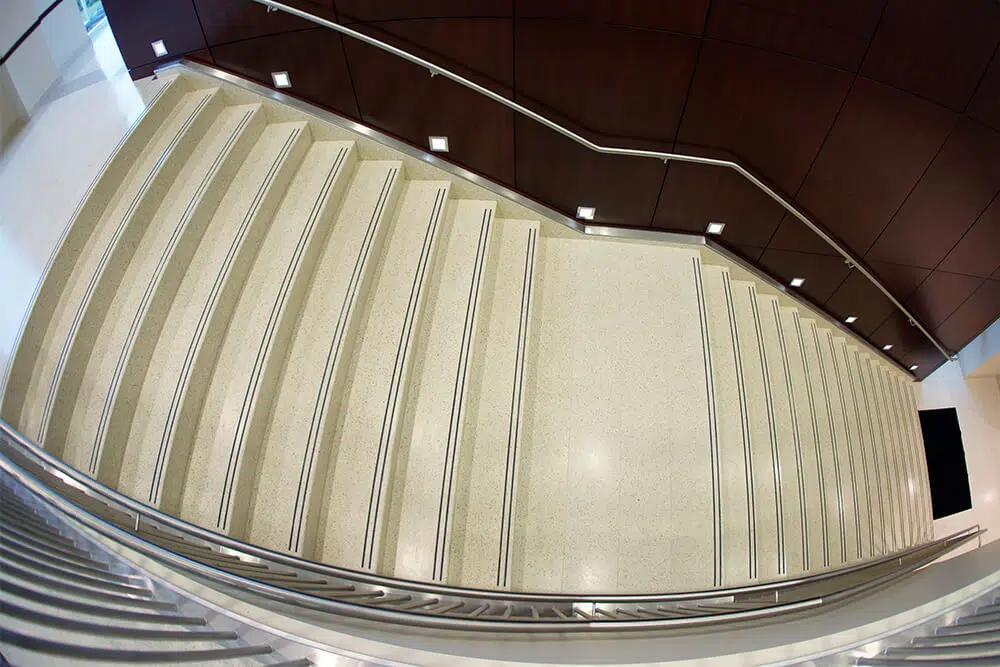
Tips for Saving Costs on Installation
Terrazzo Contractors
Terrazzo installation demands a high level of expertise and specialization, making it crucial to enlist experienced professionals for the job. Hiring skilled installers ensures efficient and accurate completion of the project while minimizing the likelihood of future repairs or replacements. Although it may be tempting to opt for inexperienced installers to save costs, such a decision can result in expensive mistakes down the line. It is advisable to prioritize reputable and skilled professionals to guarantee the creation of a high-quality and durable terrazzo floor that will stand the test of time. For this matter, contacting a National Terrazzo and Mosaic Association contractor in your region is recommended.
Size of Terrazzo Project
The pricing of terrazzo floors is influenced by the total square footage of the installation. Generally, larger projects benefit from a lower price per square foot of terrazzo. This advantage is particularly favorable for buildings such as airports, universities, and hospitals, where expansive areas require flooring solutions. While terrazzo can be installed in any area of a building, it’s worth noting that smaller projects tend to have a higher cost per square foot compared to larger ones.
Complexity of Design
The intricacy of the design or layout has a direct impact on the initial cost of a terrazzo installation. Complex elements such as geometric patterns, borders, or logos often demand intricate artwork and meticulous labor, resulting in higher overall costs. For those working with a budget, it is advisable to opt for simpler designs when designing a terrazzo floor. By prioritizing simplicity, you can help keep project costs manageable while still enjoying the timeless beauty of terrazzo.
Demolition
When incorporating terrazzo into a renovation project, it’s crucial to factor in the cost of demolition. Demolition work can significantly contribute to the overall project expenses. However, it’s worth exploring the option of pouring epoxy terrazzo over the existing substrate, provided it is in good condition. This approach can offer a cost-effective solution for integrating terrazzo into your space, as long as the existing floor is structurally sound. By assessing the strength and quality of the substrate, you can potentially save on demolition costs while achieving the desired terrazzo look.
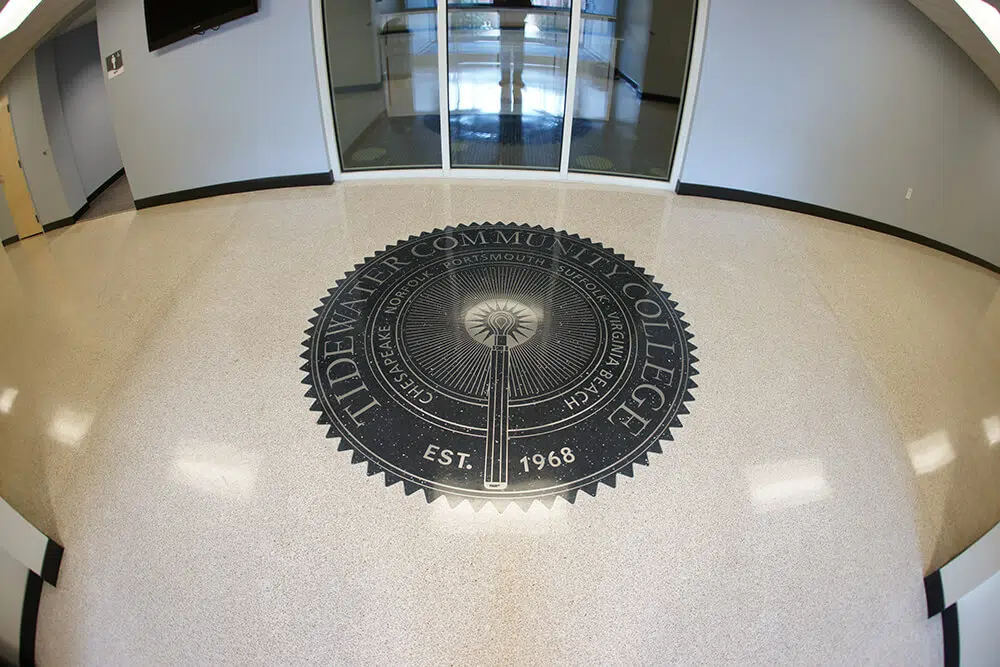
Maintenance and Durability – Return on Investment
When evaluating the affordability of terrazzo, it’s important to consider the maintenance requirements and longevity of terrazzo floors. While initial installation costs are a significant factor, the long-term expenses associated with maintenance and the lifespan of the flooring should also be taken into account. Here are key considerations:
- Maintenance Costs: Terrazzo floors are known for their low maintenance requirements, which can contribute to long-term affordability. Keeping terrazzo floors clean and well-maintained typically involves regular sweeping and periodic mopping using neutral cleaners. Unlike certain other flooring materials, terrazzo does not demand frequent waxing, polishing, or the use of specialized cleaning products. This results in reduced ongoing maintenance expenses, making terrazzo an economical choice for those seeking cost-effective flooring solutions.
- Durability and Longevity: Terrazzo is widely recognized for its exceptional durability and longevity, making it an economically sensible flooring option in the long term. With proper installation and maintenance, terrazzo floors can endure for decades, withstanding heavy foot traffic, regular wear, and daily use. This remarkable longevity significantly reduces the frequency of floor replacements or repairs, leading to substantial time and cost savings throughout the lifespan of the floor. By choosing terrazzo, individuals and businesses can enjoy a cost-effective flooring solution that withstands the test of time.
- Restoration and Refinishing Options: If a terrazzo floor starts to show signs of wear or loses its luster over time, there are restoration and refinishing options available. Through grinding and polishing the surface, terrazzo can be restored to its original shine and beauty. This process is highly effective in revitalizing the floor’s appearance and can significantly extend its lifespan. By opting for restoration instead of a full floor replacement, individuals can save costs in the long term. It’s a cost-effective solution that brings back the floor’s elegance and delays the need for a complete overhaul.
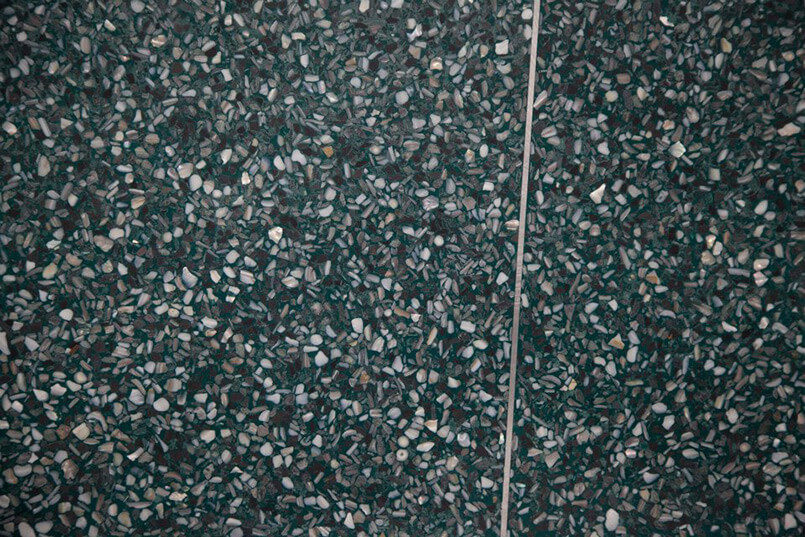
Conclusion:
Throughout the terrazzo installation process, it’s crucial to collaborate closely with experienced professionals who can provide guidance and expertise. They can help you navigate design choices, material selection, and installation techniques while keeping your budget in mind.
By approaching your terrazzo project with careful planning, creativity, and expert guidance, you can achieve a cost-effective installation that exceeds your expectations in terms of both aesthetics and value. Contact Concord Terrazzo Company to learn more today!






